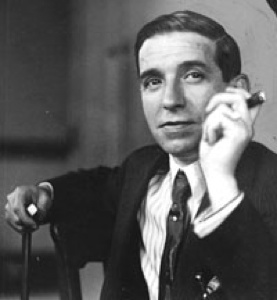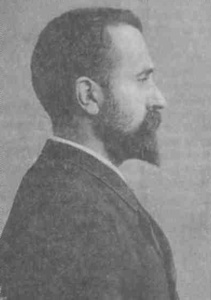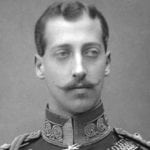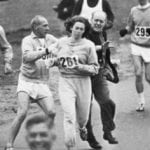 Music
Music  Music
Music  History
History 10 Less Than Jolly Events That Occurred on December 25
 Weird Stuff
Weird Stuff 10 Funny Ways That Researchers Overthink Christmas
 Politics
Politics 10 Political Scandals That Sent Crowds Into the Streets
 Weird Stuff
Weird Stuff Ten Bizarre Facts About The Doge Meme
 Our World
Our World 10 Ways Your Christmas Tree Is More Lit Than You Think
 Movies and TV
Movies and TV The 10 Coolest Stars to Set Sail on The Love Boat
 History
History 10 Things You Didn’t Know About the American National Anthem
 Technology
Technology Top 10 Everyday Tech Buzzwords That Hide a Darker Past
 Humans
Humans 10 Everyday Human Behaviors That Are Actually Survival Instincts
 Music
Music 10 Surprising Origin Stories of Your Favorite Holiday Songs
 History
History 10 Less Than Jolly Events That Occurred on December 25
 Weird Stuff
Weird Stuff 10 Funny Ways That Researchers Overthink Christmas
Who's Behind Listverse?

Jamie Frater
Head Editor
Jamie founded Listverse due to an insatiable desire to share fascinating, obscure, and bizarre facts. He has been a guest speaker on numerous national radio and television stations and is a five time published author.
More About Us Politics
Politics 10 Political Scandals That Sent Crowds Into the Streets
 Weird Stuff
Weird Stuff Ten Bizarre Facts About The Doge Meme
 Our World
Our World 10 Ways Your Christmas Tree Is More Lit Than You Think
 Movies and TV
Movies and TV The 10 Coolest Stars to Set Sail on The Love Boat
 History
History 10 Things You Didn’t Know About the American National Anthem
 Technology
Technology Top 10 Everyday Tech Buzzwords That Hide a Darker Past
 Humans
Humans 10 Everyday Human Behaviors That Are Actually Survival Instincts
Top 10 Famous Con Men
A con man is a person who intentionally misleads another person, usually for personal financial gain. In recent history there have been a number of con men who have really stood out for either the wealth they amassed, or the ease with which they tricked people. This is a list of 10 of the most famous con men in recent history.
10 Frank Abagnale [Born: 1948]
Frank Abagnale is a former cheque con artist, forger and imposter who, for five years in the 1960s, passed bad cheques worth more than $2.5 million in 26 countries. The recent blockbuster film Catch Me If You Can is based on his life. His first experience of fraud was as a youth when he used his father’s Mobil card to buy car parts that he would then sell back to the gas station for a lower price. He did not realise that his father was the one who had to foot the bill and when he was eventually confronted with the fraud, his mother sent him for four months to a juvenile correction facility.
After moving to New York, Frank lived solely on the income of his fraudulent activities. One of his most famous tricks was to print his own account number on fake bank deposit slips so that when clients of the bank deposited money, it would actually go in to his account. By the time the banks realised what had happened, Frank had taken $40,000 and run.
For two years, Abagnale travelled around the world free by masquerading as a Pan Am pilot. He was able to abuse the professional courtesy of other airlines to provide free transport for competing airline pilots if they had to move to another city at short notice. When he was nearly caught leaving a plane, he changed his masquerade to that of a Doctor. He worked as a medical supervisor for 11 months without detection. At other times he worked as a lawyer and a teacher.
He was eventually caught in France and spent six months in prison there. After that he was extradited to Sweden and imprisoned for a further six months. After a successful escape whilst travelling to the United States, he was finally given 12 years in Prison. He escaped from his prison by masquerading as an undercover officer of the Bureau of Prisons. He was once again captured in New York City and returned to jail. After serving only five years of his sentence, the US Federal Government offered him his freedom in return for helping the government against fraud and scam artists without pay.
He currently runs Abagnale and Associates, a financial fraud consultancy company and is a multi-millionaire.
Watch Frank Abagnale’s incredible story in the blockbuster hit Catch Me If You Can at Amazon.com!
9 Charles Ponzi [Born: 1882; Died: 1949]
Ponzi, an Italian immigrant to the United States became one of the most famous con men in American history. While many people do not know the name Ponzi, the Ponzi Scheme is extremely well known and continues today in Internet Make Money Fast schemes. His early life is not entirely known as he was prone to fabricate stories about it. What is known is that he spent a short amount of time at University in Rome and, after dropping out, caught a boat to Boston, USA where he arrived with $2.50 in his pocket.
His early years in the United States were troublesome. He began working at a restaurant but was soon fired for playing tricks with the bills and shortchanging customers. His next job was working in a bank in Canada that catered to Italian immigrants. His knowledge of numbers helped him to do very well there. Unfortunately it turned out that the owner of the bank was stealing money from newly opened savings accounts to pay the interest on the interest bearing accounts and to cover bad investments. The bank owner eventually fled to Mexico and left Ponzi without a job. After writing a fraudulent cheque and spending a number of years in prison, Ponzi determined to become wealthy at any cost.
Once he had settled in to life on the outside, he discovered postal reply coupons through a letter that was sent to him from abroad. He realised that he could buy foreign coupons at massively devalued prices (because of price fixing after the war) and then resell them in the United States for a 400% profit. This was a form of arbitrage and it was legal. Ponzi began canvasses friends and acquaintances for money – promising them a 50% return or a doubling of their money in 90 days. He started his own company, the Securities Exchange Company, to promote the scheme.
The word of this great investment quickly spread and before long Ponzi was living in a luxurious mansion. He was bringing in cash at a fantastic rate, but the simplest financial analysis showed that he wasn’t making money, he was losing it rapidly. For every dollar he took in, he went more deeply into debt. As long as money kept flowing in, Ponzi would stay ahead of the eventual collapse.
People soon began to become suspicious and the press were starting to publish negative articles about him. Inevitably people were starting to demand their money. Shortly after, federal agents raided his office and shut it down. No stock of stamps was found and everyone that had invested their money with Ponzi lost every penny. It is probably that he lost tens of millions of dollars. Ponzi plead guilty of mail fraud and was sent to prison. After one escape he was returned to jail to complete his sentence. He was eventually deported back to Italy and he died there in poverty in 1949.
8 Joseph Weil [Born: 1877; Died: 1975]

Joseph “Yellow Kid” Weil was one of the most famous con men in his era. Over the course of his career he is believed to have stolen over 8 million dollars. In his first job as a collector, he realized that his co-workers were collecting their debts but keeping a little part of the money for themselves. Weil started a protection racket – offering not to report their activities in return for a small portion of what they were taking.
He also used phony oil deals, women, fixed races, and an endless list of other tricks to steal from an increasingly gullible public. He could change his persona daily to further his gains: one day he was Dr. Henri Reuel, a noted geologist who travelled around and told his hosts that he was a representative for a big oil company while draining them of the cash they gave him to “invest in fuel.” The next day he was director of the Elysium Development Company, promising land to innocent believers while robbing them in recording and abstract fees. Or he was a chemist par excellence, who had discovered how to copy dollar bills; promising to increase your fortune, he would multiply your bill’s then take the booty once the police arrived.
In his autobiography, Weil writes:
“The desire to get something for nothing has been very costly to many people who have dealt with me and with other con men,” Weil writes. “But I have found that this is the way it works. The average person, in my estimation, is ninety-nine per cent animal and one per cent human. The ninety-nine per cent that is animal causes very little trouble. But the one per cent that is human causes all our woes. When people learn — as I doubt they will — that they can’t get something for nothing, crime will diminish and we shall live in greater harmony.”
7 Victor Lustig [Born: 1890; Died: 1947]
Victor Lustig was renowned as the Man who Sold the Eiffel Tower. He was born in Bohemia but later moved to Paris where he was able to con people on his frequent journeys between Paris and New York. His first con was to show people a device that could print $100 bills. The only problem, he would tell them, is that it only prints one bill every six hours. Many people paid him enormous amounts of money (usually over $30,000) for the device. In fact, the device contained two real hidden $100 bills – once they were spat out by the machine it would produce only blank paper. By the time the buyers discovered this, Lustig was well gone with their money.
In 1925, as France was recovering from the war, the upkeep of the Eiffel tower was an almost unbearable expense for the city of Paris. When Lustig read about this in a paper, he came up with his most brilliant idea. After forging government credentials, he invited six scrap metal dealers to a secret meeting in a hotel. He explained that the City could not afford to keep the tower and that they had to sell it for scrap. He told them the secrecy of the meeting and all future dealings was due to the fact that the public may become distressed at the idea of the removal of the tower.
While it seems implausible, at the time the tower was built it was meant to be temporary and this happened just 18 years after the original date for removal of the tower. Lustig took the dealers in a limousine to tour the tower. One of the dealers, Andre Poisson was convinced that the tale was legitimate and he handed over the money. When he realised he had been conned, he was too embarrassed to tell the police and Lustig escaped with the money. One month later, he returned to Paris to try the whole scam again. This time it was reported to the police but Lustig managed to escape.
At one point, Lustig convinced Al Capone to invest $50,000 with him. He stored the money in a vault and returned it two months later, stating that the deal had fallen through. Capone, so impressed by Lustig’s honesty gave him $5,000 for his effort. In 1934, Lustig was found guilty of counterfeiting. He plead guilty and was sentenced to 20 years in Alcatraz. In 1947 he died of pneumonia whilst in jail in Springfield, Missouri.
6 George Parker [Born: 1870; Died: 1936]

Parker was one of the most audacious con men in American history. He made his living selling New York’s public landmarks to unwary tourists. His favorite object for sale was the Brooklyn Bridge, which he sold twice a week for years. He convinced his marks that they could make a fortune by controlling access to the roadway. More than once police had to remove naive buyers from the bridge as they tried to erect toll barriers.
Other public landmarks he sold included the original Madison Square Garden, the Metropolitan Museum of Art, Grant’s Tomb, and the Statue of Liberty. George had many different methods for making his sales. When he sold Grant’s Tomb, he would often pose as the general’s grandson. He even set up a fake “office” to handle his real estate swindles. He produced impressive forged documents to prove that he was the legal owner of whatever property he was selling.
Parker was convicted of fraud three times. After his third conviction on December 17th, 1928 he was sentenced to a life term at Sing Sing Prison. He spent the last eight years of his life behind bars. He was popular among guards and fellow inmates who enjoyed hearing of his exploits. George is remembered as one of the most successful con men in the history of the United States, as well as one of history’s most talented hoaxers. His exploits have passed into popular culture, giving rise to phrases such as “and if you believe that, I have a bridge to sell you”, a popular way of expressing a belief that someone is gullible.
5 Soapy Smith [Born: 1860; Died: 1898]

Soapy Smith (born Jefferson Randolph Smith) was an American con artist and gangster who had a major hand in the organized criminal operations of Denver, Colorado, Creede, Colorado, and Skagway, Alaska from 1879 to 1898. He is perhaps the most famous “sure-thing” bunko man of the old west. Some time in the late 1870s or early 1880s, Smith began duping entire crowds with a ploy the Denver newspapers dubbed The Prize Package Soap Sell Swindle.
Jefferson would open his “tripe and keister” (display case on a tripod) on a busy street corner. Piling ordinary soap cakes onto the keister top, he would describe their wonders. As he spoke to the growing crowd of curious onlookers, he would pull out his wallet and begin wrapping paper money ranging from one dollar up to one hundred dollars, around a select few of the bars. He then finished each bar by wrapping plain paper around it to hide the money. He mixed the money-wrapped packages in with wrapped bars containing no money. He then sold the soap to the crowd for a dollar a cake.
A shill planted in the crowd would buy a bar, tear it open it, and loudly proclaim that he had won some money, waving it around for all to see. This performance had the desired effect of enticing the sale of the packages. More often than not, victims bought several bars before the sale was completed. Midway through the sale, Smith would announce that the hundred-dollar bill still remained in the pile, unpurchased. He then would auction off the remaining soap bars to the highest bidders.
Through the masterful art of manipulation and sleight-of-hand, the cakes of soap wrapped with money were hidden and replaced with packages holding no cash. It was assured that the only money “won” went to members of what became known as the “Soap Gang.” Soapy was eventually shot to death by a group he swindled in a card game.
4Eduardo de Valfierno
Eduardo de Valfierno, who referred to himself as Marqués (marquis), was an Argentine con man who allegedly masterminded the theft of the Mona Lisa. Valfierno paid several men to steal the work of art from the Louvre, including museum employee Vincenzo Peruggia. On August 21, 1911 Peruggia hid the Mona Lisa under his coat and simply walked out the door.
Before the heist took place, Valfierno commissioned French art restorer and forger Yves Chaudron to make six copies of the Mona Lisa. The forgeries were then shipped to various parts of the world, readying them for the buyers he had lined up. Valfierno knew once the Mona Lisa was stolen it would be harder to smuggle copies past customs. After the heist the copies were delivered to their buyers, each thinking they had the original which had just been stolen for them. Because Valfierno just wanted to sell forgeries, he only needed the original Mona Lisa to disappear and never contacted Peruggia again after the crime. Eventually Peruggia was caught trying to sell the painting and it was returned to the Louvre in 1913.
3 James Hogue [Born: 1959]
Hogue is a US impostor who most famously entered Princeton University by posing as a self-taught orphan. In 1986 Hogue enrolled in a Palo Alto High School as Jay Mitchell Huntsman, a 16-year-old orphan from Nevada. He had adopted the identity of a dead infant. A suspicious local reporter exposed him. In 1988 Hogue enrolled at Princeton University using the alias Alexi Indris Santana, a self-taught orphan from Utah. He deferred admission for one year because he had been convicted of the theft of bicycle frames in Utah. Hogue claimed in his application materials that he had slept outside in the Grand Canyon, raising sheep and reading philosophers. He violated his parole to enter class. For the next two years he lived as Santana and as a member of the track team. He was also admitted into the Ivy Club.
In 1991 Hogue’s real identity was exposed when Renee Pacheco, a student from the Palo Alto High School, recognized him. He was arrested for defrauding the university for $30,000 in financial aid and sentenced to three years in jail with 5 years probation and 100 hours of community service.
On May 16, 1993 Hogue made headlines again through his association with Harvard University. Having lied about his identity again, he was able to take a job as a security guard in one of Harvard’s on campus museums. A few months into his tenure, museum officials noticed that several gemstones on exhibit had been replaced with inexpensive fakes. Somerville police seized Hogue in his home and charged him with grand larceny to the tune of $50,000.
On March 12, 2007 Hogue pleaded guilty to a single felony count of theft of more than $15,000 in exchange for a prison sentence not to exceed 10 years, and prosecutors’ agreement to drop other theft and habitual criminal charges.
2 Robert Hendy-Freegard[Born: 1971]
Robert Hendy-Freegard is a British barman, car salesman, conman and impostor who masqueraded as an MI5 agent and fooled several people to go underground for fear of IRA assassination. He met his victims on social occasions or as customers in the pub or car dealership where he was working. He would reveal his “role” as an undercover agent for MI5, Special Branch or Scotland Yard working against the IRA. He would win them over, ask for money and make them do his bidding. He demanded that they cut off contact with family and friends, go through “loyalty tests” and live alone in poor conditions. He seduced five women, claiming that he wanted to marry them. Initially some of the victims refused to co-operate with the police because he had warned them that police would be double agents or MI5 agents performing another “loyalty test”.
Hendy-Freegard also seduced a newly married personal assistant who was taking care of his children. He told her he was with MI5 and forced her to cut contact with friends and family lest the IRA would kill her. He also took naked pictures of her and threatened to give them to her husband if she would not cooperate. She had to change her name and tell the deed poll officer it was because she was sexually abused as a child. Her loyalty tests included sleeping in Heathrow airport and on park benches for several nights and pretending to be a Jehovah’s Witness so that his bosses in MI5 would let them marry.
In 2002 Scotland Yard and the FBI organized a sting operation. First, the FBI bugged the phone of the American psychologist’s parents. Her mother told Hendy-Freegard she would hand over £10,000 but only in person. Hendy-Freegard met the mother in Heathrow airport where police apprehended him. He denied all charges and claimed they were part of a conspiracy against him and continued this story in the subsequent trial. On June 23, 2005, after an eight month trial, Blackfriars Crown Court convicted Robert Hendy-Freegard for two counts of kidnapping, 10 of theft and 8 of deception. On September 6, 2005 he was given a life sentence. Police doubt that they have discovered all the victims. On April 25, 2007, the BBC reported that Robert Hendy-Freegard had appealed against his kidnapping convictions and won. This means that the life sentence is revoked but he will still serve nine years for the other offences. He could be free by the end of 2007.
1 Bernard Cornfeld[Born: 1927; Died: 1995]
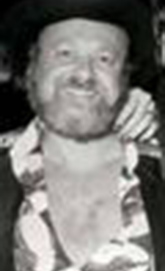
Bernard Cornfeld was a prominent businessman and international financier who sold investments in US mutual funds. He was born in Turkey. When he moved to the US, he first worked as a social worker but became a mutual fund salesman in the 1950s. Although he suffered from a stammer, he had a natural gift for selling and when a schoolfriend’s father died, the two of them used the $3,000 insurance money to purchase and run an age and weight guessing stand at the Coney Island funfair.
In the 1960s, Cornfeld formed his own mutual fund selling company, Investors Overseas Services (IOS), which he incorporated outside the US with funds in Canada and headquarters in Geneva, Switzerland. Although the headquarters were offcially in Geneva, the main operational offices of IOS were in Ferney-Voltaire, France, a short drive from the Swiss border to Geneva—this was simply a means of avoiding the problems of obtaining Swiss work-permits for the many employees. During the next ten years, IOS raised in excess of $2.5 billion, bringing Cornfeld a personal fortune of more than $100 million. Cornfeld himself became known for conspicuous consumption with lavish parties. Socially, he was generous and jovial.
A group of 300 IOS employees complained to the Swiss authorities that Cornfeld and his co-founders pocketed part of the proceeds of a share issue raised among employees in 1969. Consequently he was charged with fraud in 1973 by the Swiss authorities. When Cornfeld visited Geneva, Swiss authorities arrested him. He served 11 months in a Swiss jail before being freed on a bail surety of $600,000. He returned to Beverly Hills, living less ostentatiously than in his previous years. He developed an obsession for health foods and vitamins, renounced red meat and seldom drank alcohol. He suffered a stroke and died of a cerebral aneurysm on 27th February 1995 in London, England.
These guys were good. Now read about history’s not so successful con men in Thick As Thieves : Hilarious Tales of Ridiculous Robbers, Bungling Burglars and Incompetent Conmen at Amazon.com!

